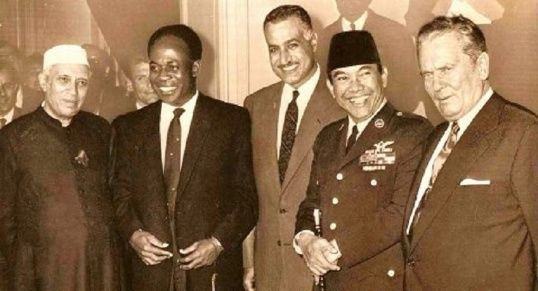Nehru believed that he was neither ambivalent nor ambiguous, but on the side of ‘non-alignment’, whatever that was intended by him to be in practice.
Friendship is tested in times of stress. In the1962 Sino-Indian conflict, offers of assistance came only after the PLA had demolished the illusion of Prime Minister Jawaharlal Nehru and Defence Minister Krishna Menon that “China would never attack India”. And the offers came with conditions that were not simply humiliating but impossible to accept for any government relying on the mandate of the people for its power. In other words, there was an ambivalence surrounding the support offered against the intrusions of the PLA that was very similar to that displayed by India towards those countries (the US especially) in the past. At the same time, countries belonging to the “Non-Aligned Movement” that had been lavished with such care by Nehru observed a studied attitude of “non-alignment” during the boundary conflict. True, Bhutan stood by India, but it may be argued that Thimpu was in fact aligned—with Delhi—rather than being part of the “non-aligned” movement. Every other country was silent despite requests from Nehru for support against what was being committed by the PLA on the Indo-Tibetan border, the frontier that had been certified by India as the Sino-Indian border from the start of the 1950s. There had been no ambivalence in the matter of India’s approach to the Peoples Republic of China, with Nehru almost beating Stalin in the race to be the first to recognize the regime founded by Mao Zedong in 1949. Throughout the 1950s, not just nibbling at but gulping down of vast tracts of territory on the part of the PRC took place, with the Government of India silent for much of that period. Nehru’s approach was a make-believe one that implied to the public that there were no intrusions nor any loss of territory to China, when the contrary was the case. Why Prime Minister Nehru chose to mislead the people of India is still a matter of debate, given that the Intelligence Bureau documented the expansion of Beijing’s control over territory that was part of India, while (at least in public) going along with Nehru that “war” was out of the question. Given his clean chit to China even in the matter of the incursions of the PLA, the ambivalence in terms of action of the US once the salami slicing of land by the PLA was replaced with securing huge chunks of territory during October-November 1962 could have been anticipated. With the takeover of most of Xinjiang by the PLA during the 1940s itself, it was apparent that Tibet was next. Nothing was done to enable that territory to defend itself, while the eager welcoming by Prime Minister Nehru of the PLA’s occupation of Tibet gave the needed fig leaf for avoidance of blame, at least to the British, who did nothing in the 1930s or the 1940s. These days, there are those across both sides of the Atlantic who favour a similar “hands off” policy with regard to the oft-threatened occupation of Taiwan by the PLA, except that unlike the Tibetans before they were overrun, it is not pacifist monks who are in charge of policy in Taipei. The PLA is likely to get an unpleasant surprise should they attempt a unification by force of Taiwan.
“Non-alignment” was in effect discarded in 1971 with the signing of the 25-year Indo-Soviet treaty. This had been masterminded by D.P. Dhar, who knew that such a treaty was the only way to prevent China from sending its forces across the Himalayas in the by then inevitable event of India moving militarily into Bangladesh to stop the genocide taking place there. Fortunately, Prime Minister Indira Gandhi shed the ambivalence that had characterised so much of India’s foreign policy and accepted Dhar’s advice over objections from others around her. Once again, as in 1962, the entire “non-aligned” bloc ignored the Pakistan army’s rapine and mass murder in Bangladesh and joined with almost all other UN member countries in looking askance not at Pakistan army war crimes but at the Indian Army’s rescue of the people of that land. Although he leaned towards the Soviet side even in the 1956 USSR occupation of Hungary, Nehru was not antagonistic to the Atlantic powers but simply ambivalent. In some of his moves, he even showed some affinity towards the US and its allies, while in other ways, he exhibited sometimes emphatic, sometimes mild, opposition. In later times, the term “strategic ambiguity” came into vogue (as did the phrase “strategic autonomy”, which referred to India’s sovereign

